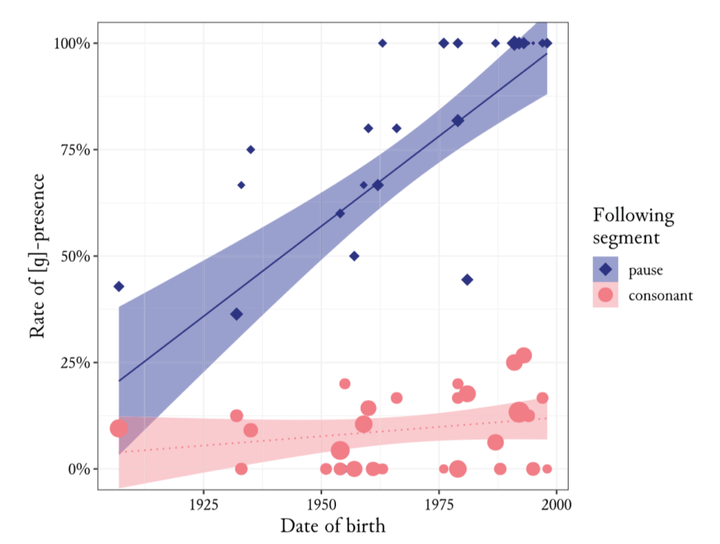Insertion and deletion in Northern English (ng): Interacting innovations in the life cycle of phonological processes

Abstract
In north-western varieties of British English the historical process of ng-coalescence that simplified nasal + stop clusters in words like wrong and singer never ran to completion, with surface variation between [ŋ] and [ŋɡ] remaining to this day. This paper presents an empirical study of this synchronic variation, specifically to test predictions made by the life cycle of phonological processes; a diachronic account of /ɡ/-deletion has been proposed under this framework, but crucially the life cycle makes hitherto-untested predictions regarding the synchronic behaviour of (ng) in north-west England. Data from 30 sociolinguistic interviews indicate that these predictions are largely met: internal constraints on the variable are almost entirely accounted for by assuming cyclic application of /ɡ/-deletion across a stratified phonology. There is also evidence of apparent time change in the pre-pausal environment, which is becoming increasingly [ɡ]-favouring contrary to the life cycle’s predictions. It is argued that this reflects a separate innovation in the life cycle of (ng), with synchronic variation reflecting two processes: (i) the original deletion, overlaid with (ii) a prosodically-conditioned insertion process. These results have implications for theories of language change and the architecture of grammar and add to a growing body of evidence suggesting that the effect of pause on probabilistic phenomena can be synchronically variable and diachronically unstable.